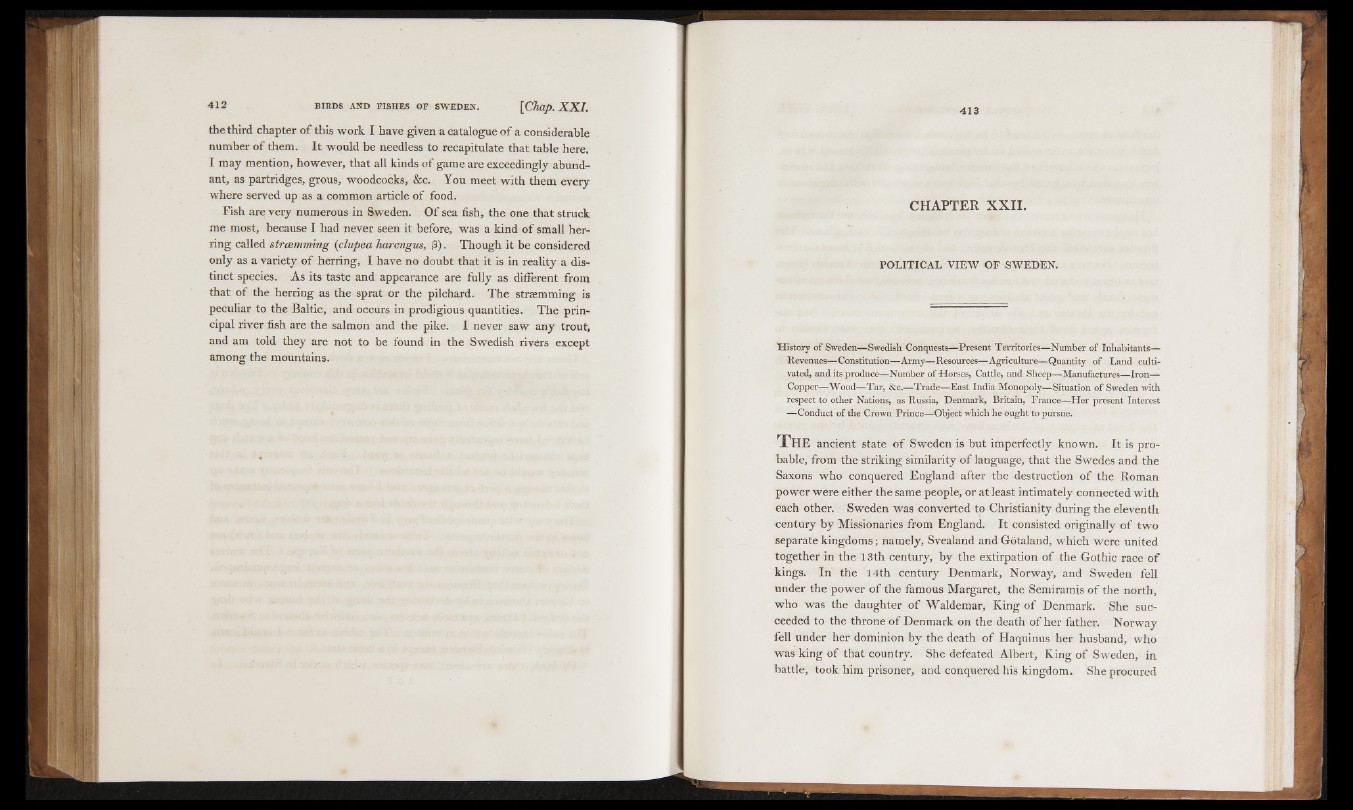
the third chapter of this work I have given a catalogue o f a considerable
number of them. It would be needless to recapitulate that table here.
I may mention, however, that all kinds of game are exceedingly abundant,
as partridges, grous, woodcocks, &c. You meet with them every
where served up as a common article of food.
Fish are very numerous in Sweden. O f sea fish, the one that struck
me most, because I had never seen it before, was a kind o f small herring
called strcemming (clupea harengus, (3). Though it be considered
only as a variety o f herring, I have no doubt that it is in reality a distinct
species. As its taste and appearance are fully as different from
that of the herring as the sprat or the pilchard. The stramming is
peculiar to the Baltic, and occurs in prodigious quantities. The principal
river fish are the salmon and the pike. I never saw any trout,
and am told they are not to be found in the Swedish rivers except
among the mountains.
CHAPTER XXII.
POLITICAL VIEW OF SWEDEN.
History of Sweden—Swedish Conquests—Present Territories—Number of Inhabitants—
Revenues—Constitution—Army—Resources—Agriculture—Quantity of Land cultivated,
and its produce—Number of Horses, Cattle, and Sheep—Manufactures—-Iron—
Copper—Wood—Tar, &c.—Trade—East India Monopoly—Situation of Sweden with
respect to other Nations, as Russia, Denmark, Britain, France—Her present Interest
—Conduct of the Crown Prince—Object which he ought to pursue.
T h e ancient state o f Sweden is but imperfectly known. I t is probable,
from the striking similarity of language, that the Swedes and the
Saxons who conquered England after the destruction o f the Roman
power were either the same people, or at least intimately connected with
each other. Sweden was converted to Christianity during the eleventh
century by Missionaries from England. I t consisted originally o f two
separate kingdoms; namely, Svealand and Gotaland, which were united
together in the 1 3th century, by the extirpation of the Gothic race o f
kings. In the 14 th century Denmark, Norway, and Sweden fell
under the power of the famous Margaret, the Semiramis o f the north,
who was the daughter o f Waldemar, King o f Denmark. She succeeded
to the throne o f Denmark on the death of her father. Norway
fell under her dominion by the death of Haquinus her husband, who
was king of that country. She defeated Albert, King o f Sweden, in
battle, took him prisoner, and conquered his kingdom. She procured